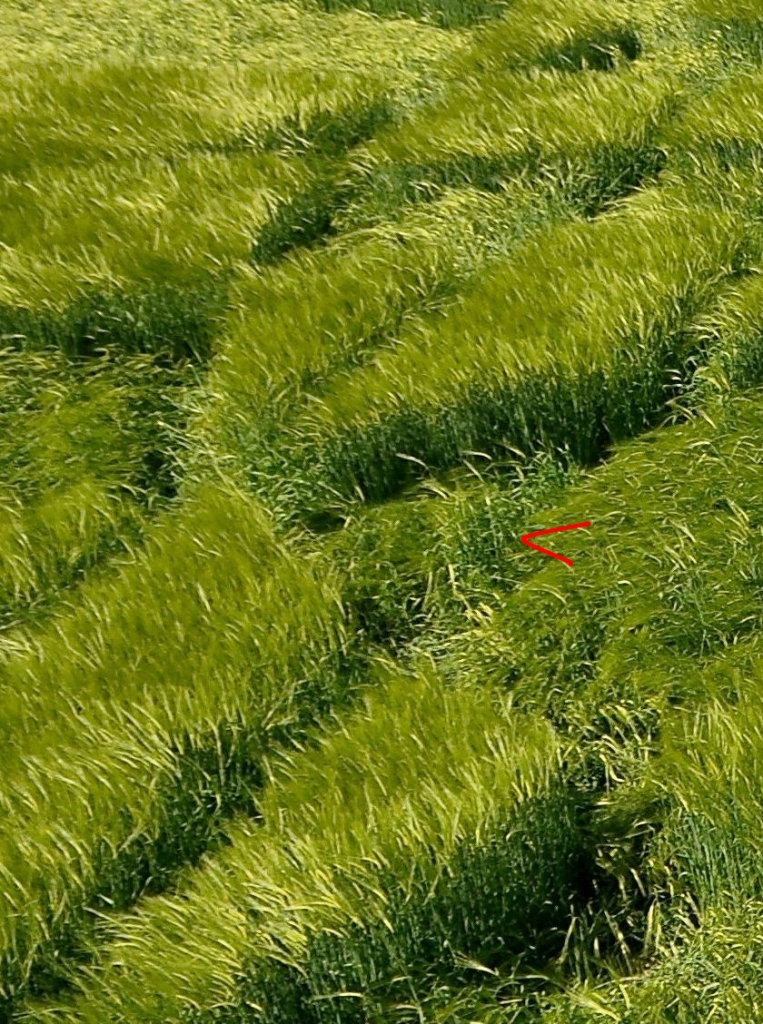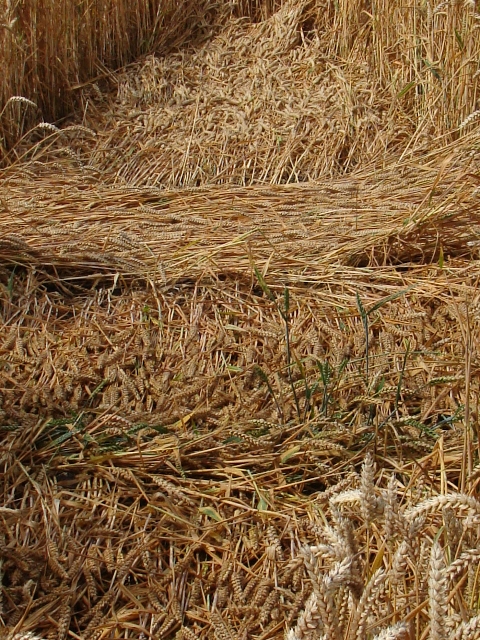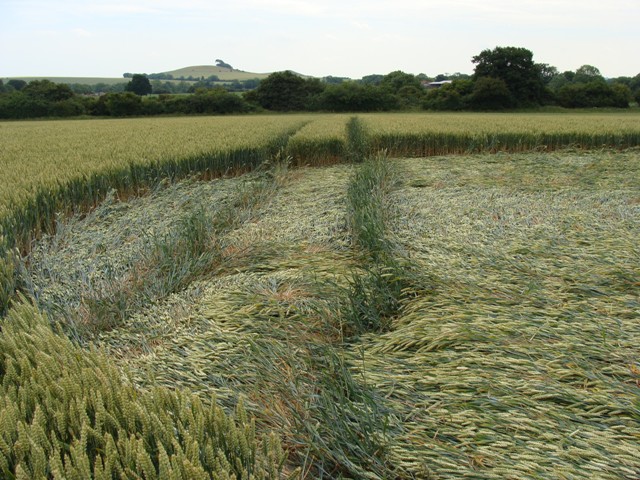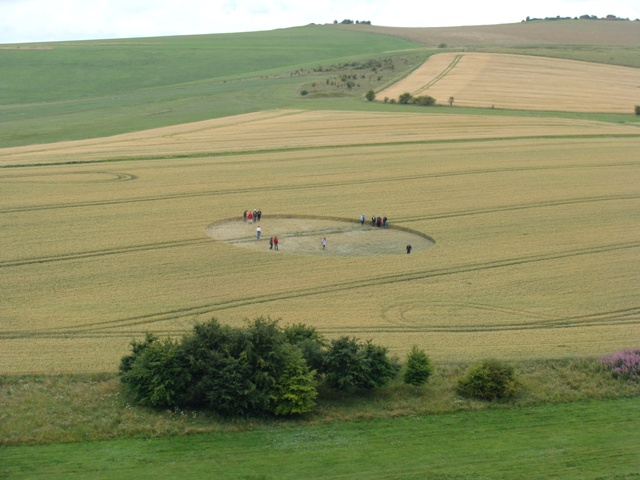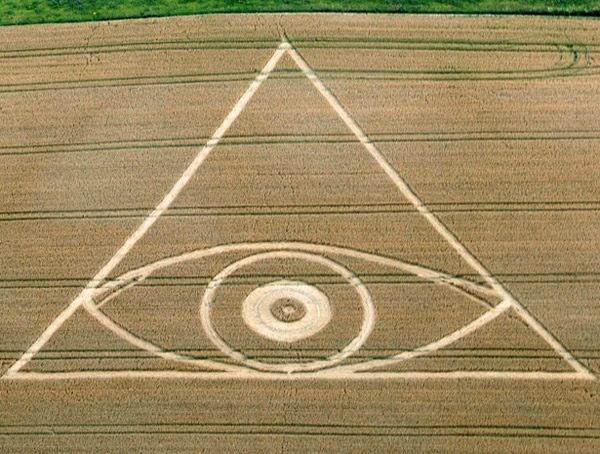|
‘Energy Leak’ in Crop Circles A more in-depth look at this apparent anomaly. The point of this article is to highlight that component of CC physiology, which I have coined, for now anyway, as ‘energy leak’… E/L. This CC feature at the time of writing seems not to be well acknowledged or documented but would appear to be a highly significant recurring anomalistic feature that could be factored into any objective and sensible appraisal of newly formed CCs. The content here is not based on personal opinion but more-on that of hard observation. Bent nodes are quite justifiably commonly used as a pointer towards mysterious origin, being unnatural and impossible to replicate, (not to be confused with phototropism) but never tramline (TL) features. I have come to regard these features as compelling evidence especially in the presence of other inexplicable observation such as bent nodes. The discovery of a still-standing-single stem …see Fig.1 (Waden Hill 2012) in an otherwise precisely laid down crop is highly improbable as is still-standing other species …see Fig1a in otherwise precisely laid down crop… that is if we are thinking in terms of human activity, yet these features are not that uncommon and are often referenced. Shaft curving as in Jubilee Field (Cherhill 2011)…see Fig.1b is just as improbable as is topographic compensation2…or ‘split edging’. See Fig.2a.(Windmill Hill 2012). But nothing significant however is said regarding that crop adjacent to one side of a tramline (TL) …Fig.2 or indeed… Fig.3. the green-only plants within the TL itself running through otherwise neatly and precisely laid more mature crop. I have encountered these features in most CCs visited on day one to some degree or other.
Figure 1
Figure 1a
Figure 1b
Figure 2
Figure 2a Three main observed recurring features within TLs. (This survey done over a period of 6 years.) 1. The effect upon green retarded TL crop in otherwise adjacent mature crop. ( green crop commonly left standing in TL.) See Fig.3 2. The effect upon crop adjacent to far edge of TL (in relation to direction of flow) when overall crop area is immature. (‘edging’ usually occurs.) SeeFig.2 3. The effect when all mature. (In most cases all seems to be laid.) See Fig.4
Figure 3
Figure 4 So, here we talk of ‘energy leak’. The term evolved from a notion that the imagined force needed to lay down the crop would be locally but temporarily and quickly decayed when encountering the void or moisture differential that is within the TL…the resultant decayed force now being unable to exert little or any influence upon material…a short pause in the laying process. The result of this momentarily decommissioned force in immature crop is a line of crop left standing during the recovery period towards full power (laying) status once more.
Figure 5 Crop onward from this line, which sits on the aft or far side of the TL in relation to the direction of flow, once normal force/energy was reinstated, would then continue to be fully laid, although not instantly as seen in Fig.5, hence the line of crop, quickly leading into fully flattening status once again. Interestingly we can note from Fig.2 how the crop behaves as the force is ‘switched off’ when it encounters the TL on its leading edge…from complete lay to angled lay then visa versa. The forces’ effect on the crop is shown to decay/recover by degree…a slight delay . Overall, an analogy would be the effect of iron filings falling off an electro-magnate when the power is cut only to pick up again when power turned on. With this example however the effect is usually instant rather than by degree. The effectiveness of a vacuum cleaner will only be maintained so long as there is good contact/close proximity with surface but as soon as the nozzle becomes detached or distanced from this surface/material (mass), in our case within the TL, the device loses its effectiveness. Interesting to note here that with 100% known to be non-mysteriously formed CCs ( in this case Salthrop 2012fringe2013s) the lay is wholesale and indiscriminate in as much as all crop/material is grounded despite mass, moisture levels or species. The two photos here compare the finesse to the mess! See Fig.6 and Fig.7 which is the known human made pattern partially showing TL mostly hidden by indiscriminate laying.
Figure 6
Figure 7 On the first we see an event of unknown origin. Below there is a more mundane explanation. The difference is striking! Please note position of covered T/Ls using the red arrows. A hypothesis could be based around : 1. Crop ‘mass’. 2. Moisture differentials. 3. A combination of both. In the case of ‘mass’ or relative density, the idea would require the energy setting to be a constant whilst latched onto material of a given average mass, set to move on a given measure. As the mass or relative density of non TL areas of crop obviously differs from that of the relative void or empty areas within the TL, the constant force applied to the crop would behave differently. In this respect the result could be a line of fully upstanding crop as a consequence of the power being ‘turned off’. Re-engaged power upon renewed contact with solid mass would quickly revert crop back to fully laid status.
Figure 8 *Note how the standing edge is always on the aft side of the TL as opposed to the leading edge. In the case of Fig.8 the rotation is clockwise so in the far ground we see standing crop to the right of the TL then in the for-ground it is on the left. As the moisture levels are even throughout, here it would appear the energy setting is responding to a mass differential. Very interestingly also, in this same frame but in a more central location the G/L runs parallel to the TL…in the middle of the frame Fig.8a. We can see that part of the still standing TL crop is positioned this time to the middle of the TL as if equal forces were being applied to both sides or energy decay was occurring evenly. So from this we could suggest direction of G/L in relation to TL may mitigate TL features. I have observed that where sparsely growing TL crop is flanked by green immature crop, where we would expect ‘edging’ to occur on the far side of the TL, this material is flattened by the greater weight and mass of the preceding lay resulting in those plants been hidden. FYI these photos were taken by myself early on day one with the farmers consent and I am confident the G/L had not been tampered with in any way.
Figure 8a In the case of moisture differentials the result could be that in the TL containing still standing but less thriving green and sparsely growing plants, the plants remain still standing which is commonly the case.
Figure 9 The plants in the main crop area always contain much less moisture than TL plants. Plants in the TL are regularly subjected to tractor traffic which at worst kills the plants, in others commonly retards their growth. These plants for this reason will always be behind the main area of crop in terms of maturity and stay green and moisture rich for much longer. These are the plants the farmer will wait for until they catch up before he can harvest. This is always a useful gauge as to estimate the time of actual harvest. A combination setting may be used in a ‘grey’ area if a CC were to be set down when the TL crop held some humidity much closer to that of the main crop area. This area needs more research. As moisture levels are the same throughout a mature CC i.e.. TL areas =overall crop area, the crop is usually shown to be laid in an overall uniform manner which includes plants in the TL area.
Figure 10 When one hears stories1 of alleged human-made CCs this type of information is of particular value. Whether others accept or not reported findings, from a research point of view we are allowing the data to build and consolidate the fact one way or another. My view is to help people understand the truthful reality of the phenomenon, especially those who are not able to see and assess in person. It is so easy to jump to a position without knowing all the relevant factors but hopefully the more informed people are the better able they are to soundly assess. Recurring themes and trends such as ‘energy leak’ are great tools with which to gain a more accurate and confident perspective as, by definition they do not rely on just one event. The other end of the spectrum is to base a judgement let’s say, on the ‘anointed wisdom’ of one individual’s opinion, that is wholly unsubstantiated. This is nonsense and beyond ludicrous. A sound and confident position is based on an aggregate of observations over a period of time there by affording more knowledge to that position. A good example would be the Yatesbury CC of 17/7/2012 whereon the farmer in collusion with other debunking parties attempted a disinformation ploy to ‘pull the wool over our eyes’, to discredit CCs in general. These parties attempted to sell a story, that may well have been pre-planned for 2012 let’s say, completely undocumented in credible word or image as one would expect in a ‘learning’ setting, of a bunch of unskilled/unpractised students ie. with no known craft provenance being from a local youth club who allegedly managed to complete, under the hide of darkness and for the purposes of supposed educational exercise, a breath-taking and sophisticated task, a task completed without mistakes or error, at the very first attempt…complete with biophysical anomalies!... Oh dear! This 2012 debunking exercise had most people fooled including seasoned so-called ‘researchers’ who asserted their views publically and influenced others by posting and locally airing their personal opinion based upon nothing more than hearsay and stories. Largely, the herd/sheeple instinct kicked in and most folks went obediently along with what they were told. Had this farmer… et al… been allowed to get away with it the result would have been very demoralising for ‘believers’ in a very poignant and significant year in CC history. Of course that was the farmers’ intention.
Figure 11
Figure 11a
Figure 11b
Figure 12 “Shown to be of mysterious origin after all despite efforts to the contrary; bent node and E/L photos having been placed on the original CCC posting…which curiously seemed to have be largely ignored at the time”. The individual or individuals it seems were not quite as clever as they themselves and some others may have thought. The CC in question, as it turned out contained ‘energy leak’ …see Fig.11… plus many fine examples of bent nodes that I personally recovered on day one...see Fig.12. jugglerslane2012 Using probability as a measure, it is highly unlikely that even any, let’s say experienced human-makers would go to the trouble of extending their limited skills to the point of crafting the necessary tramline quirks as the past has shown clearly. And since the subject of TLs was not common knowledge or placed any relevance on such quirks in the past, it would not have occurred to any aspiring ‘crop artists’ to attempt such features…which they didn’t of course. So this flags up a whole new debate potentially. Looking through archives for TL anomalies in disputed cases may be helpful. Variable settings. Quite often we encounter a CC that is, when viewed from above gives an impression of 3D. On the ground one finds the lay is sometimes not completely flattened and from this perspective it is hard to see the bigger picture 9 times out of 10.However we can observe how node angle anomalies and direction of lay have achieved this shading and textured effect. In the case of the Liddington Castle of 9/7/10 CC most of the area was laid employing a ‘bent nodes’ technique at approx. 30 degrees (approx.) off level . Here, this makes TL quirks even harder to recognise as there is little contrast. However in the photo …Fig.13 and Fig.13a one can just about make out the difference which is very subtle. Look carefully where the TL intersects the inner radius area…you can see a difference of lay . (See red arrow). Think about this. We should ask ourselves, in terms of probability, is this detail likely to have a mundane explanation?
Figure 13
Figure 13a However, not all textured or raised ground lay incorporates this kind of TL anomaly. The Silbury Hill 25/6/13 CC …see Fig.12 in barley actually blurred it into the design, we can only think to achieve a more uniform result perhaps. And since so much of the ground lay incorporated node angle bending at approx.30 Degrees, we can be confident that this particular example should not be confused with the wholesale style of ‘crafting’ commonly associated to human activity, which I have to say is a practice that is generally wildly overemphasised as in truth these human events are really quite rare.
Figure 14 Clearly there are different settings for varying applications but all noteworthy for future reference. Bishops Cannings 2011 shows all crop laid in one area of CC…see Fig.15 but not in other…see Fig.16. This particular crop was ‘on the cusp’ in as much as it wasn’t 100% ripe and contained high degree of moisture despite looking ripe. The correlation between TL crop and main was much finer. This could be interesting if we can record in future such events where the differentials are less. This area needs more research too.
Figure 15
Figure 16 Some more examples of ‘Energy Leak’.
Figure 17
Figure 18
Figure 19 And finally, the one I find most compelling of all is the E/L feature that occurred in the unwitnessed Yatesbury 2011 daytime event in the field behind the Old Roman Road that is in full view of many dog walkers and others that use the path daily, on a routine basis. This event happened between 1130hrs and 12md approx. as confirmed by the microlight pilot and passenger who flew over the site and confirmed the sighting on their return. For anyone with doubts, just ask yourself …”What is the probability, if thinking in terms of human activity again, of such a subtle and sophisticated G/L with E/L feature being achieved within half an hour in broad daylight?!” The answer of course is absolute zero. In theory this event alone should close the doubter’s debate once and for all, but of course it won’t. Anyway, if we accept this event to be way and beyond the potential of any human activity, as we sensibly should, we would need to concede all other CCs containing such features to be of mysterious origin.
Figure 20
Figure 21
Figure 22 Insert Fig.20,21 and 22 So, to conclude, although there are undeniable trends and recurring features within TLs that we could fairly and confidently rely upon as pointers, those CCs that statistically couple favourably with other anomalistic features like node anomalies or other improbable events would only compound that confidence. It would seem the humble TL has more ‘up it’s sleeve’ than one may first of thought. Paul Jacobs (CGI) Subscript1…I can’t over emphasise the importance of mindfulness when hearing of the off-putting ‘stories’ associated with a CC. Many just passively believe what they are told, especially when visiting a CC locally on the ground and are subject to peer pressure. But my experience has taught me that not all reporters have honourable intentions and some would wish you to be ‘thrown off the scent’ for whatever reason. Subscript2…Ref. Chirton 2011.
Fig.23
Fig.24
Chirton 2011 Fig.25 NB. It will be amusing to observe any (rare) future filmed human event, like Salthrop 2012 (usually done for debunking reasons) to catalogue their attempts at crafting the E/L feature. Credits. Many thanks to Cropcircleconnector for Yatesbury daytime event image. Stuart Dike for Liddington Castle image And WCCSG for Jugglers Lane,Yatesbury images. Other by PJ. |
.jpg)


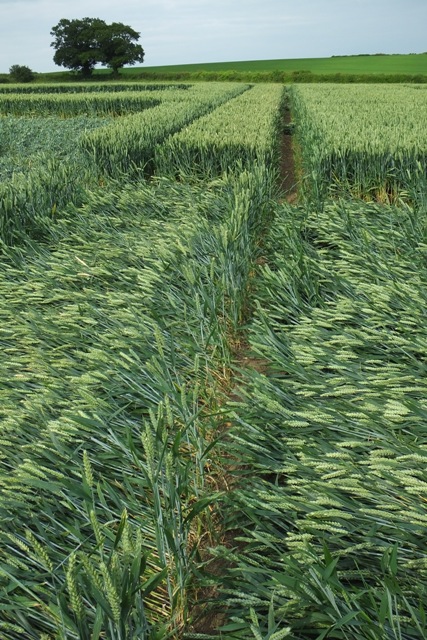
.jpg)
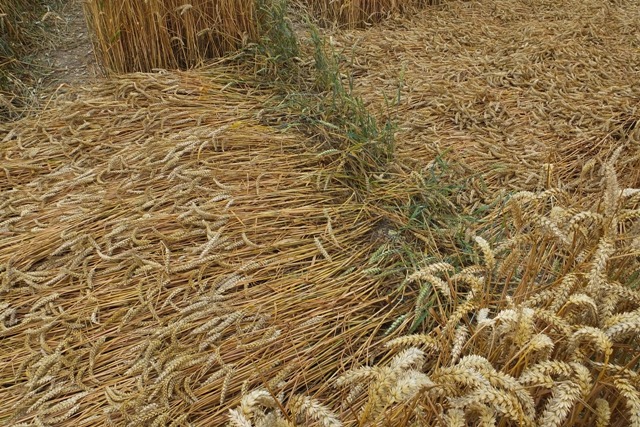
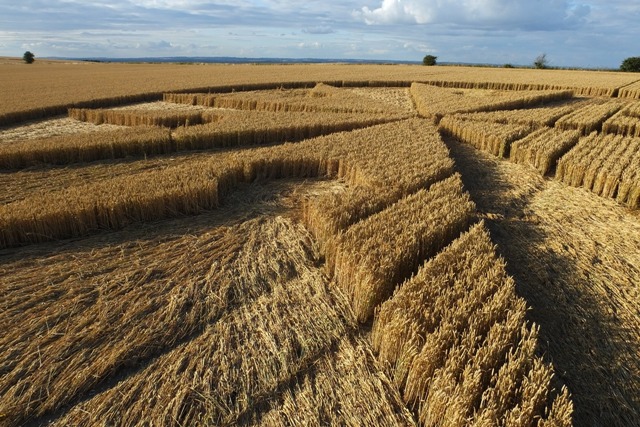





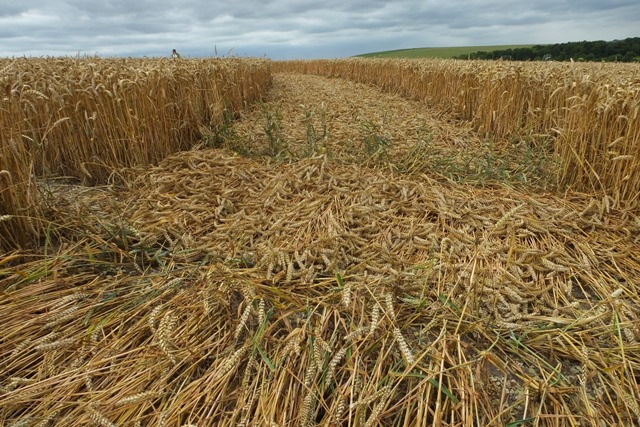


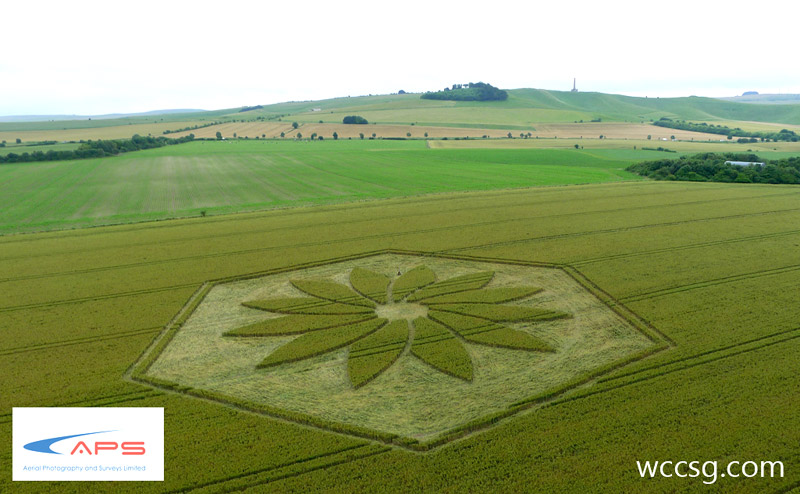


.jpg)
